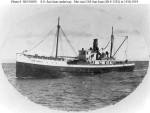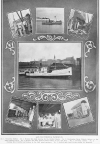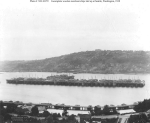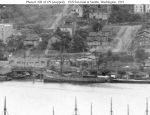Click on thumbnail
for full size image |
Size |
Image Description |
Source |
| Steamer San Juan |
 |
75k |
Underway prior to her World War I era Naval service
U.S. Navy photo NH 93690 |
Naval Historical Center |
 |
95k |
In a Pacific Northwest port, prior to her World War I era Naval service
U.S. Navy photo NH 93691 |
 |
106k |
U.S. Navy photo |
Jim Kurrasch, Battleship Iowa, Pacific Battleship Center |
 |
173k |
Steamboat San Juan (later USS SP-1352) unloading Halibut at the San Juan Fishing and Packing Company's Dock, Seattle, Washington, circa 1906.
Photo from Pacific Fisherman annual 1906, Seattle, WA, 1905, p. 44
Photo from Freshwater and Marine Image Bank at the University of Washington. FMIB 44330 |
Robert Hurst
Photos added 3 June 2022 |
 |
263k |
Poster for the San Juan Fishing and Packing Co.: No.1-Unloading Halibut; No.2, Steamer San Juan leaving for the Halibut Banks; No.3, Discharging Royal chinook salmon on San Juan Company Dock; No.4, Steamer San Juan lying at Dock taking on Ice and Bait; No.5, Dressing salmon; No.6 Packing Sliced Halibut and Salmon in One Half Pound packages; No.7, Smoket and Curet product ready for shipment. Circa 1905. Note Middle photo is similar to File: FMIB 44330 San Juan unloading Halibut at the Company's Dock, Seattle, but is not the same photo
Photo from the Freshwater and Marine Image Bank at the University of Washington. FMIB 4759 |
| USS San Juan (SP 1352) |
 |
126k |
Incomplete merchant ships laid up at Seattle, Washington. Photographed circa early to mid-1919. This is probably the storage facility at Seattle where the Northern Pacific Division (Washington State) of the Emergency Fleet Corporation laid up the wooden cargo ships it accepted without engines after the World War I Armistice, plus a few completed as flush deck barges. There are more than forty ships and barges in this group, most of them of the Ferris type (E.F.C. Design 1001). In the right center background are the Lake Union Brick Company and USS San Juan (SP 1352).
U.S. Navy photo NH 43179 |
Naval Historical Center |
 |
118k |
At Seattle, Washington, circa early to mid-1919. This image is cropped from photo NH 43179
Naval Historical Center photo NH 43179 (cropped) |
Robert Hurst |